Warning: Undefined variable $k in /home/nginx/domains/wired2fishcom.bigscoots-staging.com/public/wp-content/themes/understrap-child-0.6.0/functions.php on line 984
Warning: Undefined variable $k in /home/nginx/domains/wired2fishcom.bigscoots-staging.com/public/wp-content/themes/understrap-child-0.6.0/functions.php on line 987
It’s time to prepare for spotted bass, Micropterus punctulatus, or actually Alabama bass Micropterus henshalli coming to a fishery near you. Alabama bass are an incredibly invasive species that threaten other black bass fisheries and at the same time they have created unbelievable fisheries in Western states. In this species profile we will cover everything you need to know about spotted bass, Alabama bass and the lesser-known Choctaw bass. We might even cover the story of the defunct Wichita bass.
SPOTTED BASS HISTORY
Spotted bass Micropterus punctulatus and Alabama bass Micropterus henshalli belong to the sunfish family (Centrarchidae). The sunfish family includes bluegill sunfish, crappie and largemouth bass.
The original spotted bass described in scientific literature came from the Ohio River in 1819. As a black bass species, it inherited the genus name Micropterus from the previously named smallmouth bass. Micropterus is Greek, meaning small or short fin. French naturalist Constantine Samuel Rafinesque officially described the spotted bass, giving them the species name punctulatus which is Latin meaning “dotted”.
Alabama bass were first officially described in 1940 and received the subspecies name Micropterus puntulatus henshalli after Dr. James A. Henshall.
Dr. Henshall was known as the “apostle of black bass” and was an influential sportsman, naturalist and the author of Bass, Pike, Perch and other Game Fish of America. When the Alabama bass were considered to be a subspecies, the spotted bass were renamed northern spotted bass Micropterus punctulatus punctulatus. Following extensive genetic studies Alabama bass were further elevated to a species level officially becoming Micropterus henshalli in 2008.
A third subspecies of spotted bass were identified in 1940 as well, the wichita bass Micropterus punctulatus wichita. There were 445 samples of wichita bass collected from 1906-1928 in the West Cache Creek in Oklahoma. No samples were collected following 1928 and by 1979 the species was considered to be extinct. In 1995, researchers determined that the subspecies wichita bass were actually smallmouth bass hybrids and not an actual bass species. This erased them from the species list and created a reversion but to just two subspecies of spotted bass, Northern spotted and Alabama bass.
In 2007, the Florida Fish and Wildlife Conservation Commision were studying the genetic profiles of spotted bass found in rivers and streams of the Florida panhandle. The spotted bass they profiled did not completely fit into the existing genetic profiles of Alabama or Northern spotted bass. Over time this led to the description of the yet to be scientifically named choctaw bass Micropterus sp. cf. punctulatus in 2015.
The spotted bass is has several common names including Kentucky spot, Kentucky, Northern spot, Alabama bass, Alabama spot, Coosa spot, spot, spots, spotted and spotty.
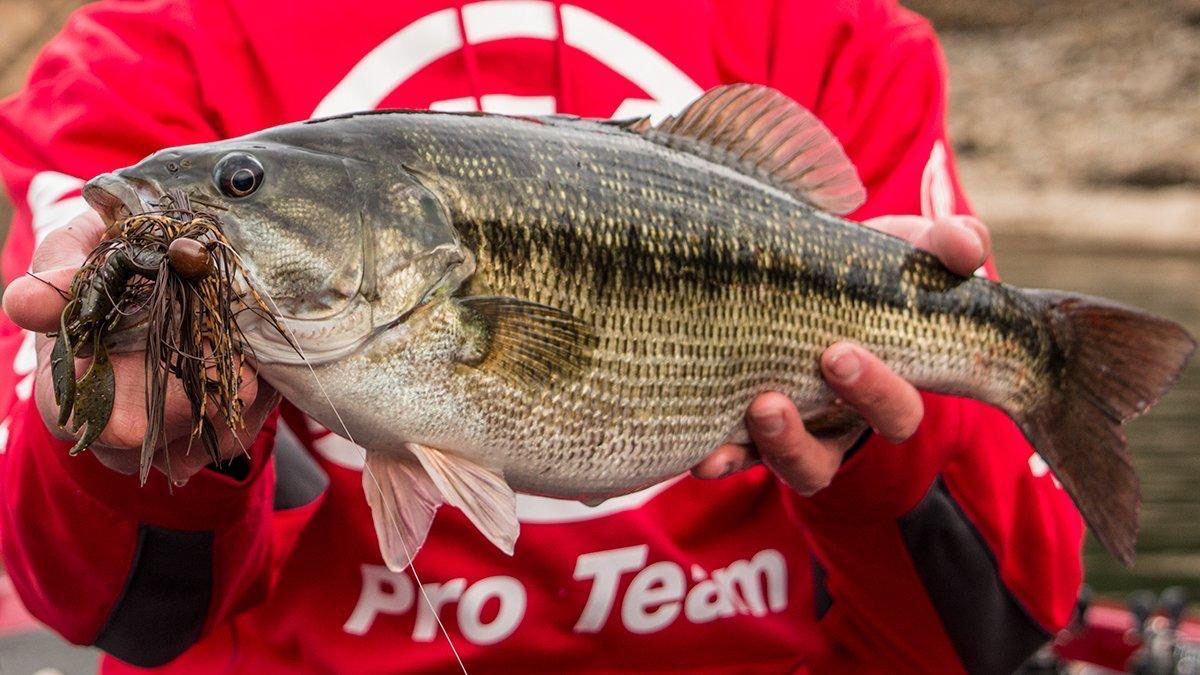
SPOTTED BASS IDENTIFICATION
The key features that separate the spotted and Alabama bass from the largemouth and other black bass species are the dark scale spots that can be found on the scales below the midlateral blotches. These scales appear to create rows of spots and are responsible for the name spotted bass.
The mouth on the spotted and Alabama bass are moderately large, yet the upper jaw will not extend past the rear margin of the eye while the mouth is closed. The largemouth bass upper jaw will extend past the rear margin of its eye.
The dorsal fin on a spotted and Alabama bass will have ten spines, whereas the largemouth typically has nine. The spiny and rayed portions of the dorsal fin will be broadly joined with a shallow notch between them. Like all black bass, excluding the largemouth bass, the spotted and alabama bass have small scales at the base of the second dorsal fin and anal fins. You can also count 15-16 pectoral soft fin rays, 11-14 dorsal soft fin rays, 9-11 anal soft fin rays and three anal fin spines.
More times than not, anglers confuse the Alabama bass and the spotted bass with each other due to how similar they appear to be. Physical differences between the two species can be subtle, with slight variations in upper dorsal mottling and mid lateral stripe size and ending. For definitive identification in the field lateral line scale counts or laboratory genetic analysis are needed.
The dorsal region of the spotted and Alabama bass are generally olive-green with dark mottling and an abdomen that is white in color. The sides will have a fairly definitive mid-lateral stripe made up of dark blotches.
These colors can change with variations in water conditions, geographic regions and seasons. Spotted bass themselves should have 7 to 10 mottled spots above the lateral stripe. The lateral stripe of a spotted bass will be made of 12 diamond-shaped lateral blotches. As blotches move toward the tail, they will become more square with a solid stripe on the base of the caudal peduncle portion of the tail. Alabama bass will have more mottling that is generally smaller in size. They will have 10 to 12 mottled spots above the lateral stipe and 15 blotches that make up its midlateral stripe.
The midlateral stripe will end on an Alabama bass as spots rather than a square-shaped stripe. The spotted bass will also have between 55 to 71 lateral line scales while the Alabama bass has 68 to 84 lateral line scales, with more than 71 being the most common.
Juvenile spotted bass can be very difficult to distinguish from other black bass species, especially smallmouth bass. At times you can observe an orange coloration on their fins.
Learning how to tell the difference between spotted bass and largemouth bass is easy with just a bit of knowledge. Aside from just spotted and largemouth bass, there are actually 9 types of bass and it’s important to know the difference.
SPOTTED BASS LOCATION
Spotted bass are native to the southern Ohio and Mississippi River basin. Their western boundary extended into Oklahoma and through east Texas down to the Gulf Coastal plains region. To the east they were found through Louisiana, Mississippi, Alabama, the panhandle of Florida and the north western corner of Georgia. To the north, their boundary was the Appalachian Mountains and the states of Ohio, Indiana and Missouri.
Today we know that this larger home range was actually a combined range of choctaw, spotted bass and Alabama bass. The spotted bass’ true home range was the broader sections of the Ohio and Mississippi River basins. The Alabama bass were found throughout the state of Alabama including the Alabama, Black Warrior, Cahaba, Coosa and Tombigbee River drainage areas. They did not extend north into or beyond the Tennessee River. The choctaw bass had the smallest home range which was almost exclusively within the panhandle of Florida.
Before the split in species spotted and Alabama bass were moved throughout the United States. They were introduced into many western states, such as California, Nevada and Arizona where they thrived in the clearer, deeper reservoirs. Spotted bass tend to have a thermal preference for the warmer waters of the southern states. Due to this preference, the distribution of the spotted bass is much lower in states north of Colorado into the midwest and northwest regions. Unfortunately, it has been found that the majority of introduced spotted bass are actually Alabama bass and today we face tough decisions on how to manage these fish and their impacts.
Outside of the U.S. spotted or Alabama bass can be found in South Africa, Swaziland and Zimbabwe.
To see estimated historic home ranges we have created this interactive map of spotted bass distribution:
SPOTTED BASS SPAWNING
Spotted bass spawning season usually begins when water temperatures reach 63℉ and ends when temperatures are above 78℉. The spawn starts in the southern states around March to April, with the northern states spawning activity starting in the summer months May to June. Some migrations are seen in river populations with fish traveling to tributaries and slow moving areas then returning to their home range over the summer.
Spotted bass spawning is similar to that of smallmouth bass. The male will select a nesting site along rock banks in river beds or in areas preferably close to cover and away from abundant sunlight but within the littoral zone in reservoirs. The male will begin removing silt and sediment from the spawning area using his tail to eventually expose rock and gravel substrate. The resulting nest is a shallow depression that is round or oval in shape.
Once the male has made the nest, he will begin to attract females. The spawning process lasts 2 to 4 hours with males circling females pushing against the female’s abdomen. A female will carry between 3,000 to 40,000 eggs depending on age and body size. The entire egg mass is not laid in one reproduction or even in one nest, the average nest will contain 3,000 to 5,000 eggs. After depositing eggs the female will leave and find another male to continue spawning with.
Males immediately fertilize the eggs as they are deposited. The eggs are small .05 inches in diameter, transparent and adhesive. They stick to the sediment initially and over time become hardened, opaque and hatch within 2-6 days depending on water temperature.
Throughout this process males guard the eggs and resulting fry from predators and use their fins to constantly remove silt and provide oxygen to the eggs. Following hatching and swim up fry will school together with the male guarding the fry schools for up to four additional weeks. The male eats very little during the spawning season and will experience loss of weight and energy as time goes on.
Although there is no known overlapping distribution of Alabama bass with largemouth bass, spotted bass or smallmouth bass, stocking outside of their natural range has led to hybridization with most black bass species. Intintally upon introduction of Alabama bass into a fishery hybridization is intense, slowly however pure Alabama genetic persists and completely eliminates or highly reduces the abundance of other black bass species. The cross between a spotted or Alabama bass with a largemouth bass is often called a meanmouth bass.
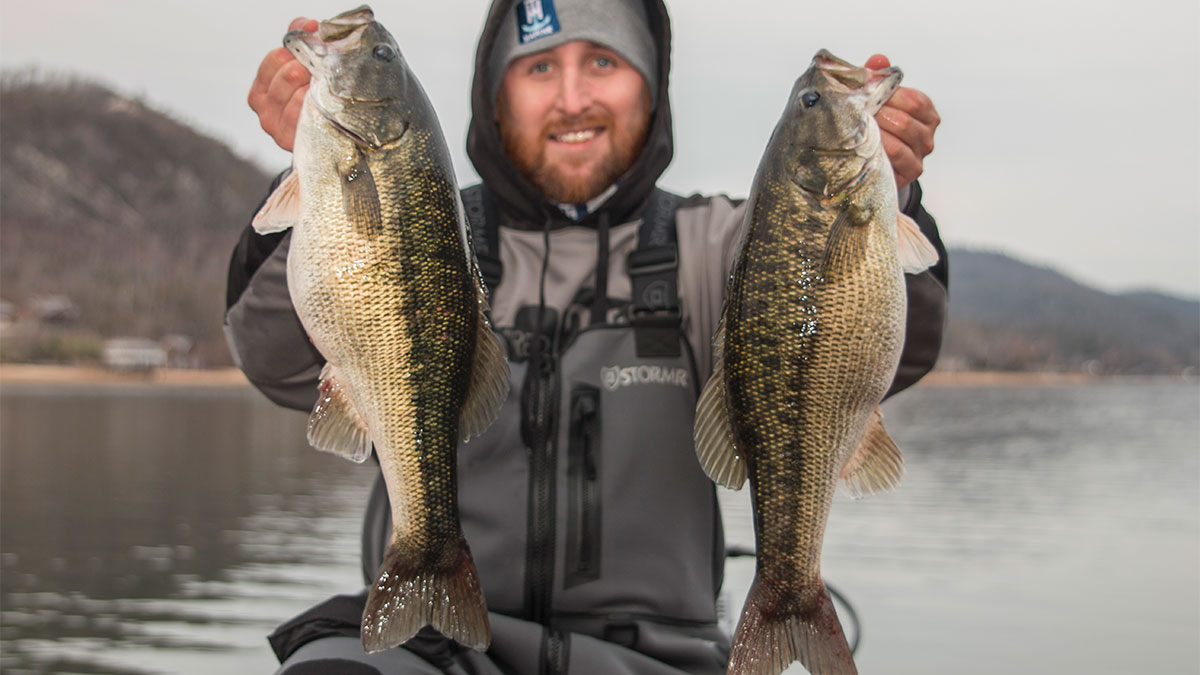
SPOTTED BASS SIZE AND LIFESPAN
Eggs begin to hatch within 2 to 6 days and fry will remain with the nest for an additional 4 to 8 days. The hatching and fry swim up process is controlled strongly by water temperature. Once fry reach 1/4-inch in length they will begin the swim up process. Almost immediately upon swimming they begin schooling. Schooling behavior will continue until they are around 1-inch in length.
Growth is typically faster in warmer climates and in reservoirs compared to rivers and streams. Within their native range, reservoir fish year 1 growth averages around 6 inches in total length. An additional 5 inches can be expected in year 2, and 2 inches per year until reaching an average maximum length of 18 inches. In river and stream populations their growth slows with a year 1 average of 3 to 4 inches, year 2 average of 2 to 3 inches, and subsequent years at or below 2 inches.
Spotted bass mature at a relatively small size compared to other black bass species with lengths of 9 1/2 to 10 inches and an age under 2 years old. This is especially true for Alabama bass. Their early maturation and ability to hybridize with other black bass species most often leads to stunted bass populations. This is why you often see state regulations that encourage harvest of spotted and Alabama bass by allowing more fish per day at a smaller size then you see for largemouth or smallmouth bass.
Spotted bass have an average maximum length around 18 inches and weight of 3 to 5 pounds. Their lifespan is estimated to be around 6 years. Alabama bass typically live longer at 8 to 10 years. The Alabama stunt more often, resulting in undersized populations with longer skinner fish being common. If conditions allow and forage such as trout are available Alabama bass can grow to an extraordinarily large size quickly, like those found in California over 10 pounds. With time, even the California populations of Alabama bass will begin to stunt without aggressive harvest.
SPOTTED BASS DIET
Juvenile spotted bass feed primarily on zooplankton once they begin swimming. They slowly add additional forage items including aquatic insects, juvenile fish and crawfish at around 2 to 3 inches in length. By 6 inches in length crawfish and fish will typically make up 50% of the spotted bass diet. When forage is limited, spotted bass can shift their diets to have a larger percentage of terrestrial insects including ants, wasps and grasshoppers.
Adult spotted bass are an aggressive predatory fish that are competitive with other bass species. The adult spotted bass diet is dependent on its environment, but they primarily feed on shad, minnows and other open water forage fish. They consume forage both using ambush and hunting techniques. They rely heavily on eyesight and consume forage whole.
Learning how to catch bass like spots requires knowing how to use some of the best bass fishing lures and often times fishing a lot of open water as spotted bass suspend and roam a lot on many different fisheries. But they can also be caught with conventional largemouth and smallmouth bass fishing tactics.
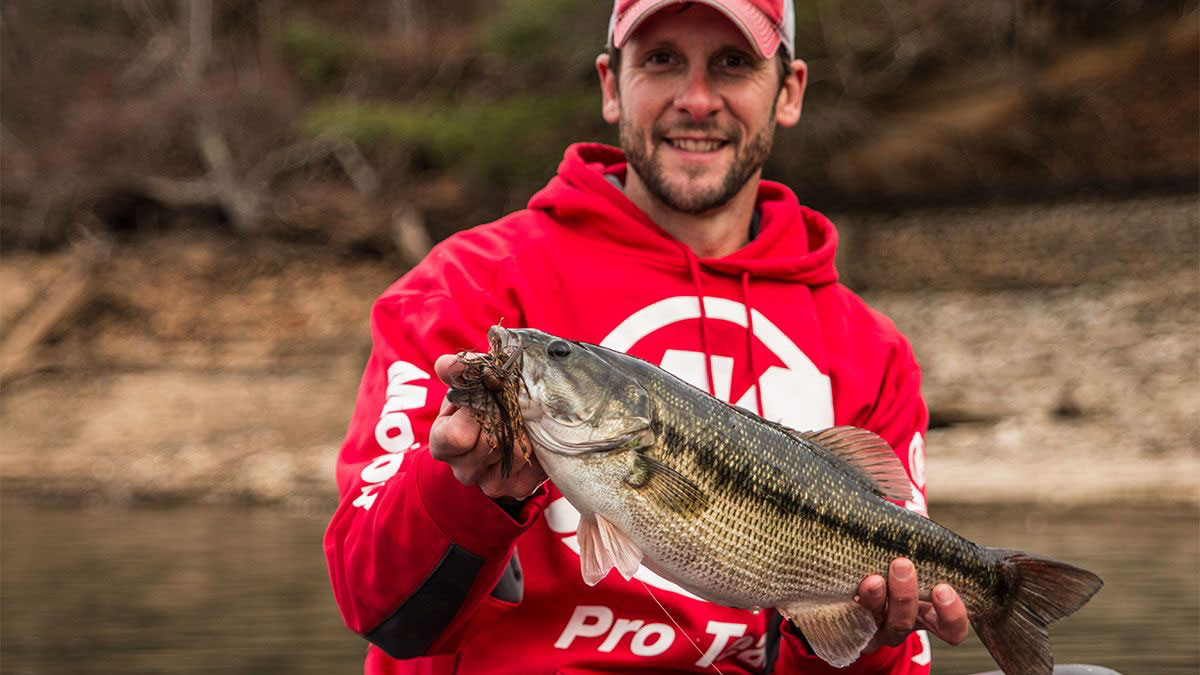
SPOTTED BASS HABITAT
Both Alabama and spotted bass should be considered to be habitat generalists with an affinity for open water and current. They prefer water that is deeper and clearer than the areas preferred by largemouth bass. These areas often have less cover or primarily standing timber and brush piles.
Aquatic vegetation is less desirable for spotted bass especially as it increases in density. In river and stream populations, spotted bass can be found near undercut banks, fallen timber and around gravel bars.
Alabama bass can typically be found in main lake areas. Once introduced into a fishery, they often dominate these areas to the level that other black bass species are pushed into the furthest reaches of creeks and tributaries.
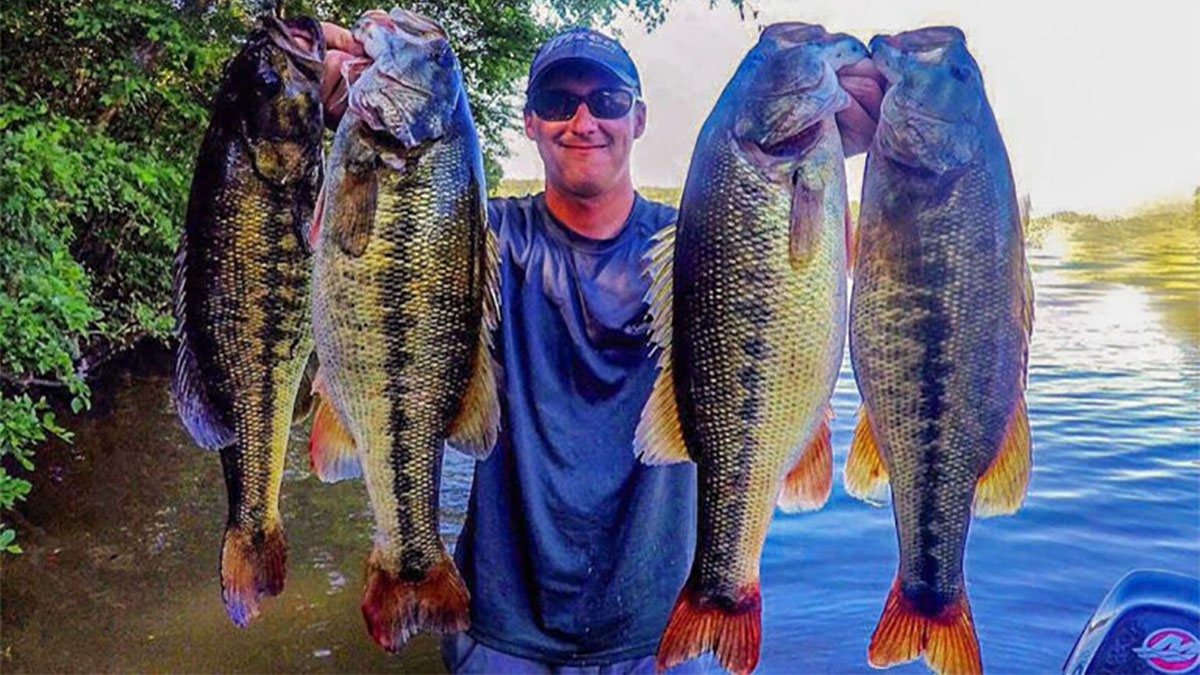
SPOTTED BASS THREATS
One of the biggest threats to spotted bass comes from within. The Alabama bass will begin to hybridize with spotted, smallmouth and largemouth bass immediately when introduced into a new fishery.
It took only 5 years from the first observation until Alabama outnumbered largemouth bass in Lake Norman, N.C.. This is a common occurrence, with genetic mixing caused by hybridization and competition being too great for the native black bass species to overcome. Spotted and smallmouth bass are much more susceptible to this process as their spawning, foraging and habitat preferences overlap greatly with Alabama bass.
Largemouth bass will typically survive an Alabama bass introduction, albeit at a much lower population level. The largemouth will inhibit areas of the fishery that have denser aquatic vegetation, are shallower and are more turbid. Smallmouth and spotted bass unfortunately will not have that ability and often are completely replaced by the Alabama bass introductions.
As with many black bass species, there is research being conducted to determine the impact of Largemouth Bass Virus (LMBV) Santee-Cooper ranavirus, Family Iridoviridae within both spotted and Alabama bass. At this time, those results have not been published but should be expected over the coming years.
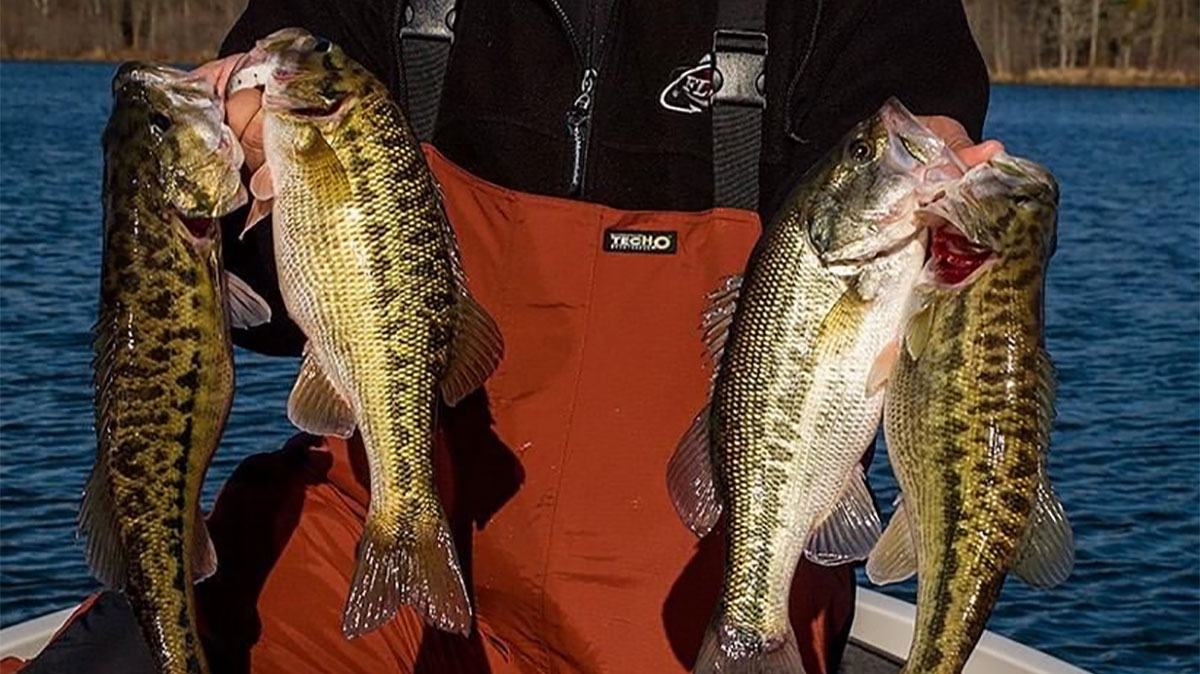
SPOTTED BASS FACTS YOU NEED TO KNOW
- The Kentucky spotted bass is Kentucky’s official state game fish which is actually a spotted bass.
- The IGFA now separates Alabama, spotted bass and Alabama/smallmouth for world record bass contention.
- No one has claimed the official IGFA spotted bass record at this time.
- The world certified record by IGFA for Alabama bass was caught by angler Nick Dulleck on New Bullards Bar Reservoir, Calif., weighing 11 pounds, 4 ounces.
- The world certified record by IGFA for Alabama/smallmouth bass was caught by angler Joel Ross on Pickwick Lake, Tenn., weighing 6 pounds, 5 ounces.
- Texas and Tennessee are the only states to have separate records for spotted and Alabama bass.












